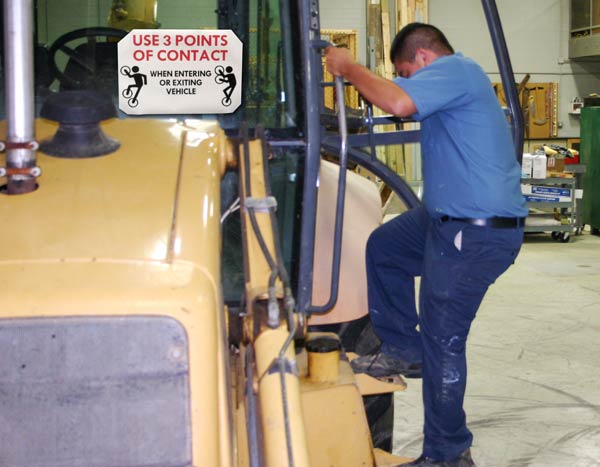
PIPP Is More Powerful Combined with Observations/AuditsMaintaining focus on lessons learned during PDRMA’s Injury Prevention Program (PIPP) can be a challenge — especially with seasonal and new employees joining your staff. That’s why PDRMA recommends conducting regular employee observations or audits to make sure they’re putting into practice what they learned.
To help members more easily conduct audits, PDRMA recently introduced observation sheets for aquatics, maintenance, recreation and Special Recreation Associations. It doesn’t matter whether you use these LRN Resource documents or create your own; both help your agency promote PIPP and keep employees and patrons safe.
There are a variety of ways to incorporate employee safety performance observations into your agency’s routines. Some supervisors prefer not to announce when they’ll be auditing safety performance, and others specifically schedule time for them and inform employees. At the South Suburban Special Recreation Association (SSSRA), audits are incorporated into everyday work activities.
“I take our drivers out two at a time in two different buses, riding with one driver while watching the other bus on the road, then stopping to switch drivers,” explains Pam Alvarado, SSSRA Safety Coordinator. “This way I can observe two drivers on two different vehicles at once.”
In addition to driver training four times a year, Alvarado also does unannounced spot checks. “I will go to programs where patrons require wheelchair tie-downs and do a spot check on the tie-downs when the drivers arrive at the program.”
Training at SSSRA is ongoing as well, ensuring new and experienced employees know the right way to perform job tasks safely to protect themselves — and patrons — from injury.
  “We discuss the importance of maintaining 3 Points of Contact at our Annual Safety Meeting and at driver training,” says Alvarado. “I also positively acknowledge proper 3 Points of Contact whenever I see staff doing it, and I document the observation for our records.” “We discuss the importance of maintaining 3 Points of Contact at our Annual Safety Meeting and at driver training,” says Alvarado. “I also positively acknowledge proper 3 Points of Contact whenever I see staff doing it, and I document the observation for our records.”
She is especially alert when she sees staff walking up and down stairs, riding escalators, or getting on and off vehicles and watches to see that staff encourages peers and participants to use the hand rails when entering and exiting the buses. “We want our staff to reinforce with everyone to hold on to the hand rails — when entering and exiting the bus, climbing ladders at pools, and going up and down stairs in the facilities.”
“Active supervisor observation of job tasks and prompt follow-up coaching and reinforcement of safe behaviors is so important in establishing sustainable safe work practices in the work place,” adds Dane Mall, PDRMA Risk Management Services Manager.
Alvarado uses PDRMA’s road check form (Appendix C, LRN #479 — Risk Management Transportation Manual) and adds, “We use PDRMA materials in some way in most trainings and/or policies we write and revise.”
In addition to supervisor observations, peer-to-peer coaching is another key component in keeping safety the focus of day-to-day activities. Naperville Park District relies on both managers and staff to communicate that value throughout the agency.
“Our Safety Star program is a great complement to our injury prevention initiative because it provides an opportunity for staff to recognize and reward their peer’s good behaviors,” says Jennifer Herrmann, Safety Manager. “It’s important to correct unsafe behaviors, and it’s equally important to recognize good behaviors.”
A visit from Dr. Jim Clapper, PDRMA’s injury-prevention consultant, showed Naperville employees how many steps were involved in planting a tree — and how many opportunities for injury there were. Clapper then trained staff on how to perform the task safely.
“After the training, employees then felt more empowered to correct their own behaviors and encourage peers to work more safely, too,” explains Herrmann.
Whether it’s a supervisor’s observation, recognition of good behavior or “peer pressure” keeping safety top of mind, the human element is still the most important. “Employees at SSSRA are very conscientious because of the emphasis we place on our safety training and their personal commitment,” Alvarado says. “They are always watching out for the safety of the participants. Mostly what I do is encourage them to keep doing what they are already doing.”
PDRMA Resources:
|

